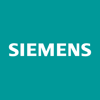Across the industrial world, AI has evolved from a technical project into a strategic priority for industrial leaders. Yet progress is uneven. Adoption rates are high, but results are mixed. Many companies lack the systems, skills, and governance needed to scale. The future of industrial AI will depend on more than smarter models. It will hinge on better decisions about where to invest, how to govern, and how to build.
This edition of Industry Signals draws insights from reports by Deloitte, Bain, and McKinsey and incorporates new signals from industry vendors, including OpenAI’s October 6 announcements on infrastructure, tooling, and deployment. Together, they trace how industrial AI is moving from aspiration to execution, and what it will take to sustain that shift.
Barriers to Scaling AI
Deloitte’s AI Trends 2025 report finds that companies adopting next-generation AI—agentic, physical, and sovereign—face technical, regulatory, and cultural barriers. The study points to four main challenges:
- Unclear use cases slow adoption, with many organizations stuck in pilots that don’t produce measurable returns.
- Legacy systems make integration difficult, especially for autonomous or physical AI solutions.
- Governance and regulation remain uncertain, particularly in areas involving decision-making or data localization.
- Workforce readiness is a critical gap, as firms lack both technical talent and the cultural agility to adapt.
- Sovereign AI raises new questions about control and flexibility, as companies balance local rules with global operations.
Infrastructure Under Strain
Bain’s 2025 Technology Report highlights a growing mismatch between AI’s demand and the systems supporting it. By 2030, global compute needs could exceed available capacity by $800 billion. The report notes:
- Compute demand will reach 200 gigawatts worldwide, outpacing current investment.
- AI agents are replacing tools, forcing companies to rethink architecture and accountability.
- Technology sovereignty is fragmenting the global tech stack, driving localization of talent and supply chains.
- Economic pressure is rising, with investors demanding higher returns and efficiency from digital spending.
- Winners will be those that invest not only in models but also in the “connective tissue” — the data, systems, and governance that make scale possible.
Industry Signal: vendor infrastructure alignment. On October 6, OpenAI announced a strategic partnership with AMD to deploy up to 6 gigawatts of GPUs, beginning with 1 GW in 2026. The move underscores how rapidly compute demand is accelerating and how AI vendors are racing to secure capacity. For industrial leaders, this illustrates both the capital intensity and the urgency of planning for future infrastructure constraints.
Rewiring the Organization
McKinsey’s State of AI report shows that while three-quarters of companies now use AI, most still see little financial impact. True gains come from organizational change, not just technology. Key findings include:
- Adoption without impact: Over 75% of firms use AI, yet 80% report no measurable bottom-line gains.
- Workflow redesign drives the strongest financial results, correlating most directly with EBIT growth.
- Leadership oversight matters: companies where CEOs oversee AI governance see higher returns.
- Hybrid structures are emerging, with centralized governance and decentralized innovation.
- Best practices — such as roadmaps, KPIs, and dedicated teams — remain rare but strongly linked to success.
Reducing agent friction through new tools. Also on October 6, OpenAI introduced AgentKit, a suite of tools for building and managing AI agents. It includes a visual builder, connector registry, chat-interface toolkit (ChatKit), and improved evaluation capabilities. These tools are intended to lower the barrier between experimentation and production, helping enterprises deploy agents more quickly and consistently.
That same day, OpenAI also launched Apps in ChatGPT and an Apps SDK, allowing third-party applications to run inside ChatGPT. Combined with the general availability of Codex, OpenAI’s code-generation engine, these releases point toward a more composable AI ecosystem — one where workflows, applications, and models merge into unified work environments. For industrial firms, such integration hints at how future operations could embed intelligence directly into everyday systems.
From Hype to Hard Work
The reports agree: the next phase of industrial AI will be defined less by new technology and more by disciplined execution. Scaling AI will require modern infrastructure, clear governance, and skilled people. Vendors are beginning to respond — expanding compute capacity, maturing agent frameworks, and simplifying deployment — but enterprise results will depend on how well organizations integrate these advances into real operations.
That’s a wrap for this edition of Industry Signals.
Have a report, use case, or event you'd like to see featured in an upcoming issue? Send a note via PM. We’re always looking to spotlight what’s shaping the future of industry and find recommendations from the Xcelerator Community especially valuable. Your insights and experiences continually shape Industry Signals.
— Industry Signals Community Editor




